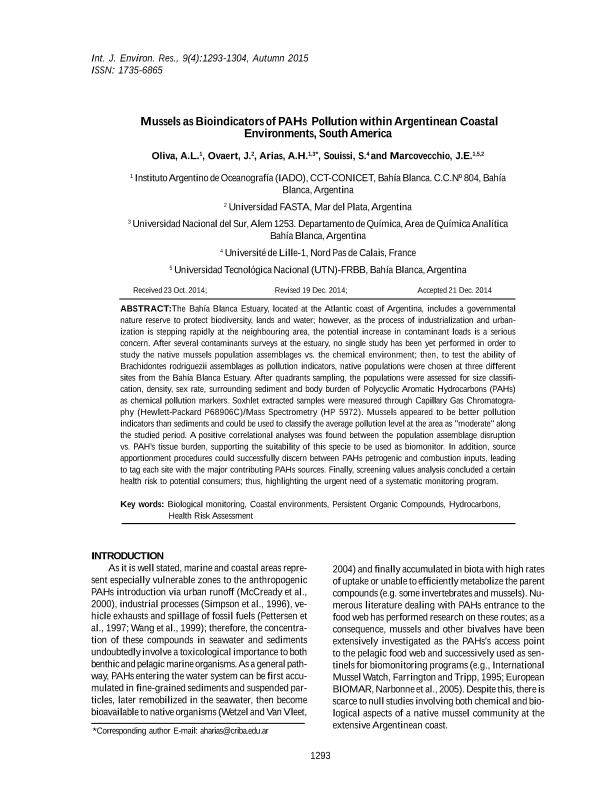Artículo
Mussels as Bioindicators of PAHs Pollution within Argentinean Coastal Environments, South America
Fecha de publicación:
09/2015
Editorial:
Univ Tehran
Revista:
International Journal Of Environmental Research
ISSN:
1735-6865
Idioma:
Inglés
Tipo de recurso:
Artículo publicado
Clasificación temática:
Resumen
The Bahía Blanca Estuary, located at the Atlantic coast of Argentina, includes a governmental nature reserve to protect biodiversity, lands and water; however, as the process of industrialization and urbanization is stepping rapidly at the neighbouring area, the potential increase in contaminant loads is a serious concern. After several contaminants surveys at the estuary, no single study has been yet performed in order to study the native mussels population vs. the chemical environment; then, to test the ability of Brachidontes rodriguezii assemblages as pollution indicators, native populations were chosen at three different sites from the Bahía Blanca Estuary. After quadrants sampling, the populations were assessed for size classification, density, sex rate, surrounding sediment and body burden of Polycyclic Aromatic Hydrocarbons (PAHs) as chemical pollution markers. Soxhlet extracted samples were measured through Capillary Gas Chromatography (Hewlett-Packard P68906C)/Mass Spectrometry (HP 5972). Mussels appeared to be better pollution indicators than sediments and could be used to classify the average pollution level at the area as “moderate” along the studied period. A positive correlational analyses was found between the population assemblage disruption vs. PAH’s tissue burden, supporting the suitability of this specie to be used as biomonitor. In addition, source apportionment procedures could successfully discern between PAHs petrogenic and combustion inputs, leading to tag each site with the major contributing PAHs sources. Finally, screening values analysis concluded a certain health risk to potential consumers; thus, highlighting the urgent need of a systematic monitoring program.
Archivos asociados
Licencia
Identificadores
Colecciones
Articulos(IADO)
Articulos de INST.ARG.DE OCEANOGRAFIA (I)
Articulos de INST.ARG.DE OCEANOGRAFIA (I)
Citación
Oliva, Ana Laura; Ovaert, J.; Arias, Andres Hugo; Souissi, S.; Marcovecchio, Jorge Eduardo; Mussels as Bioindicators of PAHs Pollution within Argentinean Coastal Environments, South America; Univ Tehran; International Journal Of Environmental Research; 9; 4; 9-2015; 1293-1304
Compartir




